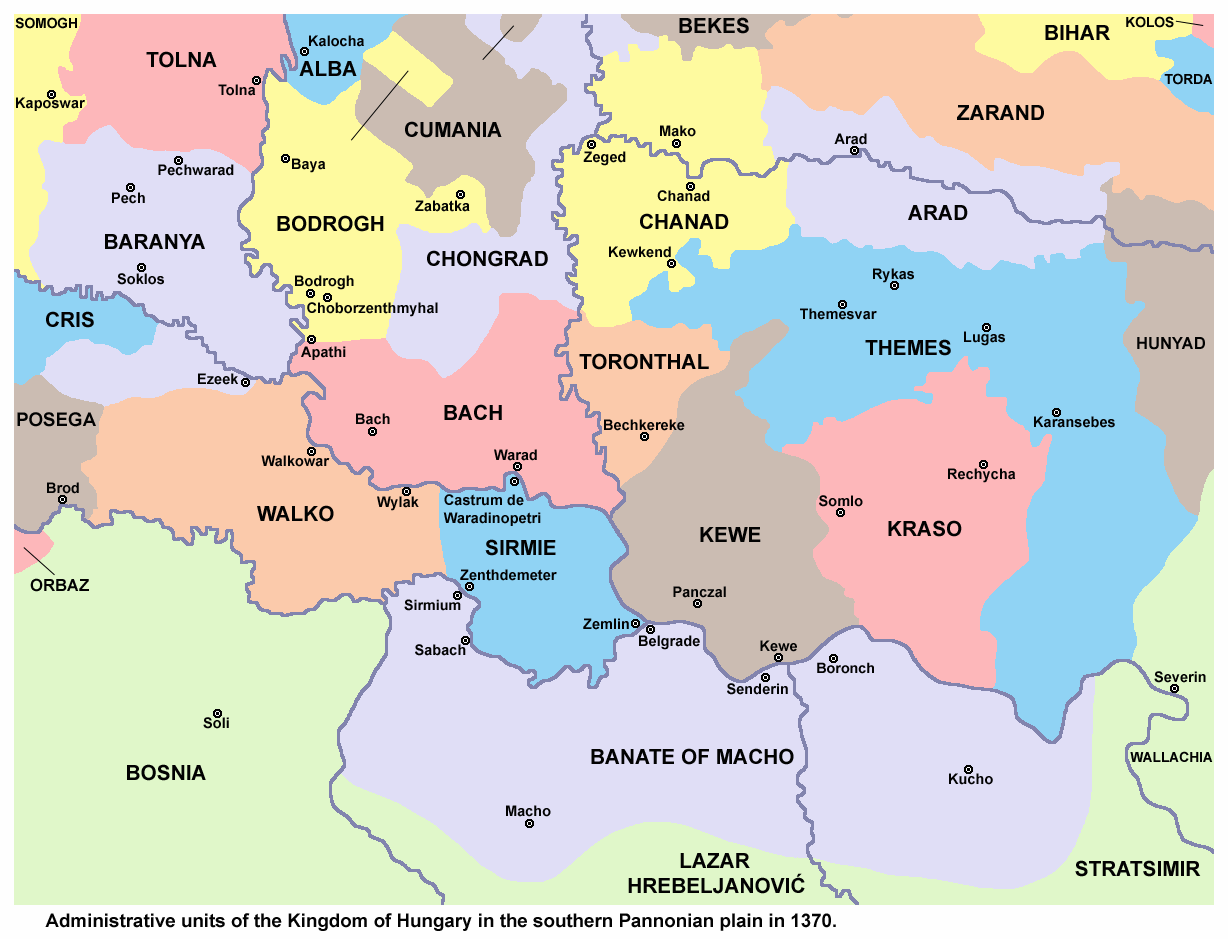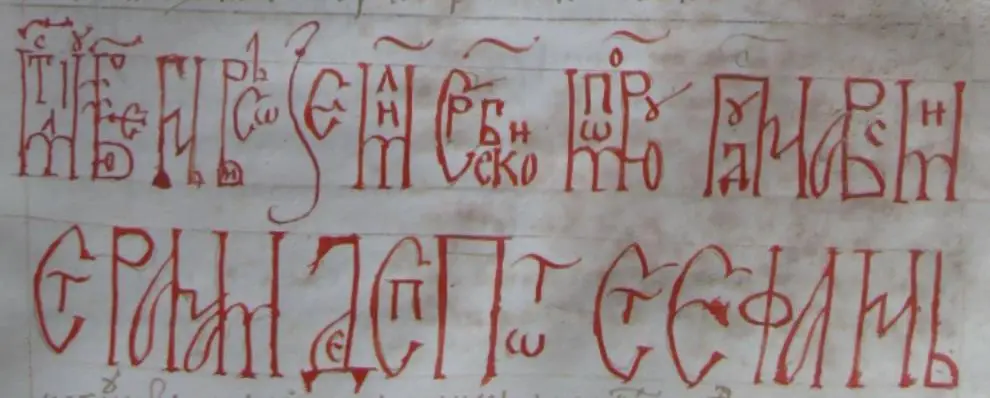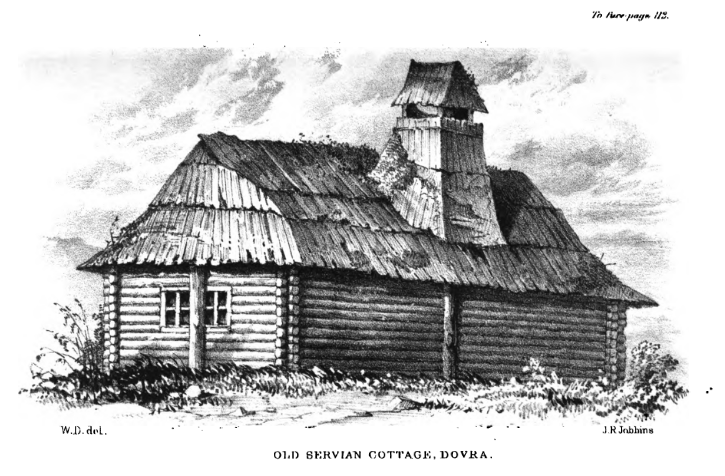Original research paper by Mirčeta Vemić, Institute of Geography “Jovan Cvijić”, Serbian Academy of Arts and Sciences: http://www.doiserbia.nb.rs/img/doi/0352-5732/2014/0352-57321447201V.pdf
UDC 94(100)”1914/1918″
UDC 343.819.5(=163.41)(493.5)”1914/1918″
DOI: 10.2298/ZMSDN1447201V
COLLECTED DATA ON AUSTRO-HUNGARIAN CONCENTRATION CAMPS FOR SERBS
The system of the great number of camps which existed on the territory of Central Powers during the First World War has not been described well enough, let alone sufficiently treated with statistical tools or scientifically researched, even until the start of the Second World War. The camps were again used by the Axis powers, in an even more horrific form, especially with the use of gas chambers and crematoria. The first reports of these camps were received by the Serbian government in Thessalonica from Živko Topalović [1918] and as a part of continued state efforts from Archibald Reiss [1919] as well as Jovan Vučković [1919], the consul in Prague, who were the contemporaries of this war. Immediately after the war, Miladin K. Nikolić Rasinski [1919] and the historian Vladimir Ćorović [1920] wrote, who themselves were internees [interned civilians, translator’s note] and eyewitnesses. The Kingdom of Serbs, Croats and Slovenes (Yugoslavia) started a systematic survey of cemeteries and graves after the war, then a partial exhumation of the victims and raising memorial ossuaries. This was mostly done on the territory of Czechoslovakia, due to the especially good relations of the two countries and the friendship of Tomáš Masaryk and King Aleksandar Karađorđević.
From the survey of the dead POWs and interned civilians who were citizens of the Kingdom of Serbs, Croats and Slovenes after WWI which was done by the Czechoslovak authorities, based on archpriest Crvčanin`s records [1932], of the listed number of the victims and buried people (17 378) in all the regions of the Republic (in 409 cemeteries), 7956 were exhumed and laid into ossuaries from 100 cemeteries, with 9422 left not exhumed in 319 cemeteries, which means that more than half were left not exhumed (Table 1).
With the breakout of the WWII the efforts to establish the final number of the victims were stopped, especially since some of the camps, like Mauthausen, were re-established. When it comes to the tribulation of the Serb internees, a small number of researchers is also noticeable. Due to a lack of knowledge of the languages of the Central Powers, material and other reasons, many archives were not available to them, with the archives at home also being insufficiently explored. Many of the camp records were not neatly kept, especially for the victim numbers of the interned civilians. After the Second World War, in socialist Yugoslavia, only a few individuals wrote about the concentration camps of WWI: Krivokapić [1976], Stojančevič [1989], Paravac [1990], Panić et al [1994], Opačić [1994], Stojiljković [1995], Đuković [2002], Berenanová & Bružeňnák [2012] and others who mainly dealt with the situation in the individual camps. All of them brought forth their precise but not finalised numbers about the number of people who went through those camps, especially about the number of those who suffered there, but they were far away from totaling up the numbers for all the camps.
Table 1. The list of the dead citizens of Kingdom of Serbs, Croats and Slovenes in Czechoslovakia during WWI
| Region | Dead | Cemeteries | Exhumed | Cemeteries | Not Exhumed | Cemeteries |
| Czechia | 7108 | 185 | 6603 | 46 | 505 | 139 |
| Bohemia and Silesia | 1232 | 54 | 1182 | 52 | 50 | 11 |
| Slovakia | 8285 | 147 | 171 | 2 | 8114 | 146 |
| Sub-Carpathian Russia | 753 | 23 | – | – | 753 | 23 |
| Total | 17 378 | 409 | 7956 | 100 | 9442 | 319 |
Source: Crvčanin, M [1932], Album Fotografija, Serbian Archives, 15/63
Taking the so far listed information about the most likely number of Serb internees and victims for the 10 biggest of the 300 concentration camps on the territory of Austria-Hungary, it can be seen that there was 236 807 of them, which is higher than the 200 000 figure reported for the Versailles peace conference. The lowest number of the ascertained victims is 59 524, with the assessment that there was more than 64 597 of them, coming close to the officially accepted number of 70 000. There is still an open question about the number of internees and those who died in the remaining 290 concentration camps, assuming that the number of camps was 300 (Table 2).
Table 2. The number of Serb internees in the 10 biggest Austro-Hungarian concentration camps during WWI
| Concentration Camp | Total number of internees | Number of Serb Internees | So far Established Serb Victims | Assessed Serb Victims |
| 1. Arad – Fortress | – | 11 000 – 15 000 | 4317 | > 4317 |
| 2. Doboj | – | 45 791 | 8000 | 10 000 – 12 000 |
| 3. Nagymegyer | – | 21 000 | 5927 | > 7000 |
| 4. Nezsider | – | 14 500 | 9700 | > 9700 |
| 5. Boldogasszony | 11 613 (1916) | 11 613 | 7000 | > 7000 |
| 6. Sopronnyék | 35 000 – 40 000 | 25 000 + 3 000 | 5715 | > 5715 |
| 7. Mauthausen | 40 000 | 15 000 | 8256 | > 8256 |
| 8. Aschach an der Donau | – | 10 903 | 5362 | > 5362 |
| 9. Heinrichsgrün | 66 000 | 40 000 | 2573 grave sites | > 2573 |
| 10. Braunau (Bohemia) | 35 000 | 35 000 | 2674 grave sites | > 2674 |
| Total | 299 807 | 236 807 | 59 524 | > 64 597 |
Source: Complied by the author based on the previously listed information and sources referenced in this paper
Besides establishing the number of camps, internees and those who died in them, it is very important to establish the circumstances under which the concentration camps functioned, their regime of life and work, as well as the state of affairs surrounding them. All who wrote about the concentration camps, whether the survivors or the scientific researchers, brought forth the big picture and the main causes of the mass death in them. Of the slew of causes of death of the internees, the ones that stand out the most are: the location of the camp, the accommodations of the internees, famine, forced labour, poor hygiene, inadequate health protection, diseases and infections, punishments and plunder of the internees, etc. As Rasinski, a survivor, pointed out: “This is enough for everything to be understood. Of the constant hunger, poor buildings, bullying, forced labour and torture comes the anaemia, then tuberculosis. The dead… in the cemeteries do not speak…” [Nikolić Rasinski 1919]
Location of the camp
As a rule of thumb, the concentration camps were built in the unhealthy parts of Austria, Hungary, Czechia and Moravia, next to big bodies of water, close to the swamps of the Danube and other rivers, as well as next to the Nezsider and Balaton lakes, which along with the sharper climate than in Serbia constantly worsened the health of the internees. The conditions were especially hard in the camps on the then territory of Hungary.
Accommodations
Except the prison of the Arad fortress and the horse stables in Doboj and Neszider, the concentration camps were under the open skies in the beginning, fenced off by barbed wire, with the internees very sparsely clothed and shod, exposed to the snow and rain, only for the improvised wooden barracks to be built later for them, where they would lie on the ground or straw, where there was little or no heating, with the winters very long and hard. Many internees froze to death, and the external temperature was figuratively measured by the number of the dead.
Hunger in the camps was constant and daily.
During 1914. it was somewhat bearable, for the food stores to disappear already at the start of 1915. and famine started. In the beginning, according to the dietary norms, the internees would receive daily a cooked meal, monotone and tasteless (a few potatoes, cabbage, sugar and fodder beat and very rarely – thin bean stew), and in the mornings and evening ersatz coffee. With that they would receive a bread of 750 grams, which was split between threes and “once a week every convict would get 100 grams of meat – black pudding and brine”. Later, instead of that food, a broth was made in which for every 3000 litres of water went “a few kilograms of ground grass, yellow or fodder beat or the cabbage leaves” without fat or meat [Đuković 2002]. The bread was reduced to 500 grams, with a changed composition with a third of it being bread flour and the rest corn flour, ground chestnuts and other. In the end the bread was reduced to 350 grams to three internees. The dietary norms had fallen below the biological minimum, so that the people would pull up and eat grass in the camps and would fight with animals for the slop on the dumping grounds. A great, if not the greatest, number died of hunger and with insane hallucinations.
Such a state of affairs was witnessed by Dr Živko Topalović who after visiting Austro-Hungarian camps submitted a report to the Government of the Kingdom of Serbia on Corfu, in which he stated the following among other things: “Austrian and our doctors performed post-mortems, examined and measured the corpses. There were corpses of grown men, which weighed no more than 30 kilograms” [Topalović 1918]. The betterment of the hunger of the internees started with the arrival of packages with food from their families, from the Government of Serbia and Red Cross, Kolo Srpskih Sestara and friends from occupied Serbia, as well as the humanitarian organisations, benefactors and friends of Serbia globally. However, almost half of those packages was fully or partially pilfered before they were handed to the internees. The Allies formed the Committee for Aid to Internees in mid-1917, headquartered in Paris, which would send food to all the camps via rail wagons from Bern (Switzerland), with the food being received by a committee of internees and camp command staff, which prevented the camp staff from stealing the food.
The exhaustion of the internees with hard and dangerous labour was also constant.
The internees replaces the Austro-Hungarian workforce which was on the fronts. They were primarily engaged in the work that the Austro-Hungarian citizens avoided or refused. Serb internees worked in coal mines, quarries, factories, especially armament ones, those of chemical purpose and military equipment, the built roads, railways, waterworks, regulated waterways, log and transport the timber and its products, even in the snow and frost of the Carpathians, carried various loads on their backs across the Russo-Polish swamps, did agricultural work on the estates of the magnates, etc. Without protection, food, clothes, shoes, hygiene, ambulances and rest they were forced and bullied to work as long as possible to maximise their productivity.
Serbian POWs were exposed to special dangers on the Italian and Russian fronts, where they would dig trenches in the fire zones, carry ammo, carry out the wounded, reinforce the forward positions with barbed wire, when they would pull up artillery using ropes on inaccessible terrain or carried up the artillery ammunition and building materials for reinforcing the artillery positions on their backs, where due to the crossfire of the warring sides “many soldiers were wounded and died and a multitude froze to death” [Topalović 1918].
The personal and collective hygiene of internees in all the concentration camps was below elementary needs.
In the beginning there was not even enough water supplied for survival, let alone for washing and laundry and soap was not even given out. They worked, lived and slept in the same clothes, changing their underwear after several months. Due to the weak personal and collective hygiene there were lice in the camps, which quickly spread to all the internees and with them came diseases. The improvement in the camps’ water supply was slow, but they helped towards improving the hygiene.
Health protection of the internees.
According to the Hague conventions, Austria-Hungary was bound to create normal living circumstances for all the POWs and internees in the camps, satisfy the basic life needs, protect the psychic and physical health, maintain the functions of life and cure the ill and wounded. However, according to the report of Ž. Topalović [1918], the ambulance service and medical practice in Austro-Hungarian camps was almost non-existent. There was a lack of doctors, orderlies, medicine, rooms for the ill, etc. which is why the service could not prevent or cure the diseases which were a mass occurrence. In some cases of a spread of an epidemic, the official medical staff would leave the concentration camps and leave the care of the infected to the doctors who were interned there, who were also few. Therefore it is rightly questioned whether the non-enforcement of measures for preventing and containing epidemics, curing of the ill and non-provision of health protection for the healthy was a consequence of chance, negligence, irresponsibility and impossibility or whether it is a conscious, perfidious, planned and organised policy for the destruction of the interned people?
The infections and diseases which kill the largest number of the internees were: typhus and typhoid, dysentery, tuberculosis, pneumonia, kidney inflammation, inflammation of the stomach lining, gangrene, meningitis with a smaller number dying from wounds, sclerosis, malaria, appendicitis etc.
Punishments of the internees.
The lack of rights of the internees was absolute. There was no codification of disciplinary infractions, felonies nor misdemeanours, types and severity of punishments, the jurisdiction in sentencing and how punishments were to be carried out. All of this was grabbed by the camp command, which was judge, jury and executioner. It all depended on the current mood of the command staff. From the commander to the guard everyone would beat, bully and humiliate the internees, always done publicly. They were punished with a ban on drawing rations, which was insufficient as it was, which accelerated their deaths. Harder punishments, for attempted escape, were: being tied to a stake behind their back, 30 days imprisonment or hanging at the pole or a tree upside down, as well as capital punishment. The tying to the stake was done diagonally: left hand to the right leg and right hand to the left leg, with irons being clapped onto the legs, with no support on the ground, where the victim would remain in public for up to six hours. The imprisonment was solitary for 30 days, with the guards beating the imprisoned once or twice a day. Upside down hanging for two hours would often cause people to faint, when they would be taken down from the pole, brought back to consciousness and hung back up until the fulfillment of the punishment. The punished would often start bleeding from the nose and mouth and would die like that.
Capital Punishment was most commonly performed by hanging and in the Nezsider concentration camp according to findings by Reiss [1918] “cooking people alive was used as a punishment”.
Plundering of the internees was numerous and varied.
In the start the plunder was done via various inspections in which money, jewelry, watches and other valuable items were taken away. Serb internees were not allowed to receive money from their families, with the money being deposited and never seen again. Instead of money they would receive monetary coupons which were up to four or five times less valuable than the money received. The coupons could only be used in the camp stores, where they would buy food which they were deprived of in their rationing.
Writing to families was at first time-limited, but was later allowed en masse, but for espionage and not humanitarian reasons, as the Austro-Hungarian intelligence service controlled the correspondence, inserted itself in it and in this way followed the state of affairs with the Serbian military on the front.
*
All of the listed causes of pomor in the concentration camps acted cumulatively, with the greatest toll being taken by famine, infections and diseases, as well as the heavy and dangerous labour. Famine was the primary cause. Rasinski wrote: “With all force of a hungry beast, we ran after the bread… Bread, bread, only bread! – the desperate cries rang out… It was so arranged by the Austro-Hungarian inquisition so that gradually and without feeling it, death is caused. And then no one is guilty. The aim was achieved: to have less of our people every day! A systemic extermination!” [Nikolić Rasinski 1919].
Austria-Hungary was called the prison of nations at the end of its existence and it confirmed that title during the First World War (1914-1918). The concentration camps it formed showed themselves as an efficient tool for mass murder. When it comes to the Serb internees, in Austro-Hungarian concentration camps died not only POWs, but also civilians, women, children and old men aged from 1 to 101, which only speaks to the intention to destroy the Serbian people together with its military. As the concentration camps from the WW1 were repeated en masse in WW2, it becomes clear that the camps were made with the intention to be the most efficient tool for genocide while they existed.
Translated by Books of Jeremiah



